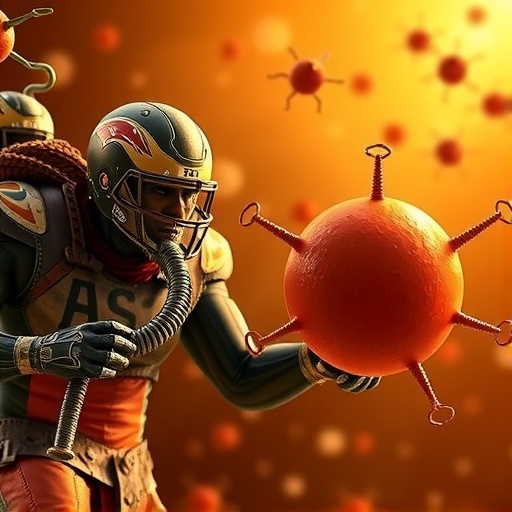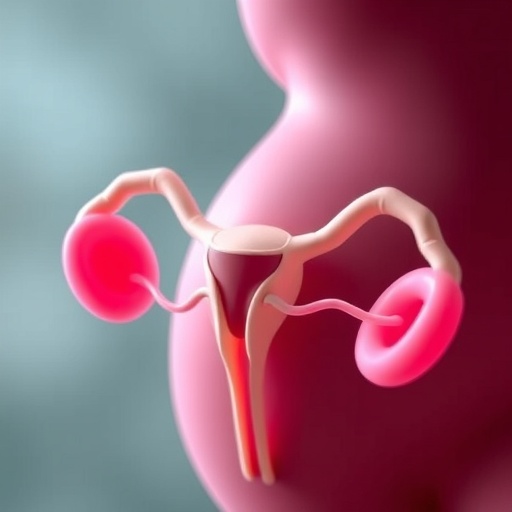Professor Im Joo Rhyu, a prominent figure in the field of biomedicine, has recently led an innovative study that merges the realms of medicine and art through a unique examination of Gustav Klimt’s iconic painting, The Kiss. The research team, composed of esteemed professors and dedicated graduate students from Korea University College of Medicine, sought to explore the profoundly intricate relationship between the vivid red, blood cell-like forms depicted in the artwork and their medical implications. This team comprised Professors Hyunmi Park, Dae Hyun Kim, and Hwamin Lee, alongside Master’s student Daeun Kwak, who collectively analyzed the historical and medical literature prevalent during Klimt’s fin de siècle period, which spans from the 19th century to the early 20th century.
A cursory glance at The Kiss reveals clusters of red, disc-like shapes positioned on the woman’s chest and knees, forms that could very well be mistaken for red blood cells from a medical perspective. This striking resemblance is not merely coincidental; the study posits that these elements imbue the painting with an essence of vitality, effectively intertwining the biological functions of red blood cells with the intense psychological undertones represented by the color red. The implications of this research extend beyond mere artistic interpretation, suggesting that Klimt’s work encapsulates a narrative regarding the cyclical nature of life, burgeoning with physiological symbolism associated with human reproduction.
Delving deeper into the historical context, one cannot overlook the influence of Karl Landsteiner, who won the Nobel Prize for his discovery of the ABO blood group system. His groundbreaking 1901 publication emerged in the Wiener Klinische Wochenschrift, an Austrian medical journal where Professor Emil Zuckerkandl—a close acquaintance of Klimt—held an editorial role. The connection is further illuminated by Zuckerkandl’s delivery of an anatomy lecture for artists at Klimt’s behest in 1903, a pivotal moment that likely molded Klimt’s artistic perspective and approach to representations of human anatomy in art.
Adding a layer of complexity to this analysis is the realization that Klimt was an owner of Meyers Großes Konversations-Lexikon, a well-circulated German encyclopedia containing colored illustrations of blood cells. This suggests a distinct possibility that the imagery deeply influenced Klimt’s artistic output. The strategic placement of the red discs within The Kiss can also be perceived as a conscious design choice, symbolically aligning with the anatomical shape of a heart. Such details evoke the rhythmic essence of life flowing through the woman, possibly signifying the new life she may be carrying.
Moreover, the study proposes that the red discs near the woman’s knee may symbolize menstrual blood—a nuanced yet significant representation of fertility and reproductive vitality. This notion adds depth to the understanding of the artwork, implying that Klimt intentionally integrated menstruation into the visual narrative, elevating this natural biological process to a focal point within the artistic expression. It raises questions about how historical artists like Klimt sought to intertwine biological realities and psychological insights through their work.
To investigate the psychological impact of these red, blood cell-like forms, the research team employed a creative approach by crafting a modified version of The Kiss, which they termed Kiss, RBC Knockout Kiss. This altered creation involved the removal of the red discs, allowing the team to conduct a survey of visitors at the 2022 Ulsan International Art Fair. The results were telling; viewers who observed the original painting used adjectives such as intensity, splendor, beauty, and young love to describe their experience. In stark contrast, those who viewed the modified version associated it with monotony, stillness, and a sense of lifelessness, underscoring the profound impact of the red forms on the viewer’s emotional response.
Professor Rhyu encapsulated the essence of this research by stating, “Klimt’s The Kiss is a masterpiece that not only captures the ecstasy of love but also seamlessly weaves together art and medicine.” This underscores a significant realization about how the fusion of scientific understanding and artistic representation remains not only relevant but crucial in shaping our comprehension of both the nuances of human experience and the various narratives found within art.
Building on the team’s prior explorations, this investigation follows a 2021 study published in the esteemed Journal of the American Medical Association (JAMA), which focused on the symbols of human development presented within The Kiss. The earlier study had revealed that the intricate patterns in the figures’ garments could metaphorically represent fundamental elements of human reproduction, including sperm, eggs, and the process of fertilization. This latest research dovetails seamlessly with their previous findings, further emphasizing the significance of examining art through a scientific lens.
The culmination of these academic endeavors resulted in a newly published paper in the Journal of Korean Medical Science, entailing the findings of this rich interdisciplinary exploration, intriguingly titled “Medico-Artistic Analysis of Red Blood Cells in Gustav Klimt’s The Kiss.” This work not only adds to the growing discourse surrounding the intersection of art and medicine but also encourages further academic inquiry into the inherent connections between these often-separate fields.
As we continue to unearth the lingerings of Klimt’s genius, the artistic and medical community is urged to recognize the importance of interdisciplinary insights. The ways in which art reflects various aspects of human biology while simultaneously invoking deep emotional responses can reshape our understanding of not only art but the human experience itself. The research underscores a potential blueprint for future studies, advocating for a broader examination of how other artists throughout history may have similarly intertwined scientific understanding within their artistic expressions.
The findings presented lay fertile ground for future explorations, encouraging a dialogue that transcends disciplinary boundaries. With ongoing developments in both art and medicine, the hope remains that further discoveries will continue to challenge and expand our interpretations of the elements essential to life depicted in the arts, illuminating the intricate tapestry of human existence woven through creativity.
In essence, the study serves as a reminder that the intersections of art and science should not be overlooked; rather, they should be celebrated for their capacity to enrich our understanding of both domains. As Klimt’s The Kiss continues to captivate generations, this research invites audiences to revisit the painting with a newfound appreciation for its embedded medical symbolism and its profound connection to the visceral experiences of love and life.
Subject of Research: Not applicable
Article Title: Medico-Artistic Analysis of Red Blood Cells in Gustav Klimt’s The Kiss
News Publication Date: 8-Nov-2024
Web References: http://dx.doi.org/10.3346/jkms.2025.40.e19
References: Not available
Image Credits: KU medicine
Keywords: Gustav Klimt, The Kiss, red blood cells, medical symbolism, art and medicine, interdisciplinary study, human experience, fertility, psychological interpretation.
Tags: anatomy of the kissartistic representation of human anatomybiomedicine and art integrationemotional impact of color in artfin de siècle art movementhistorical context of Klimt’s workinterdisciplinary study of art and scienceKlimt’s The Kiss analysismedical history in visual artsmedical implications of artpsychological interpretation of color in artred blood cells symbolism in painting





